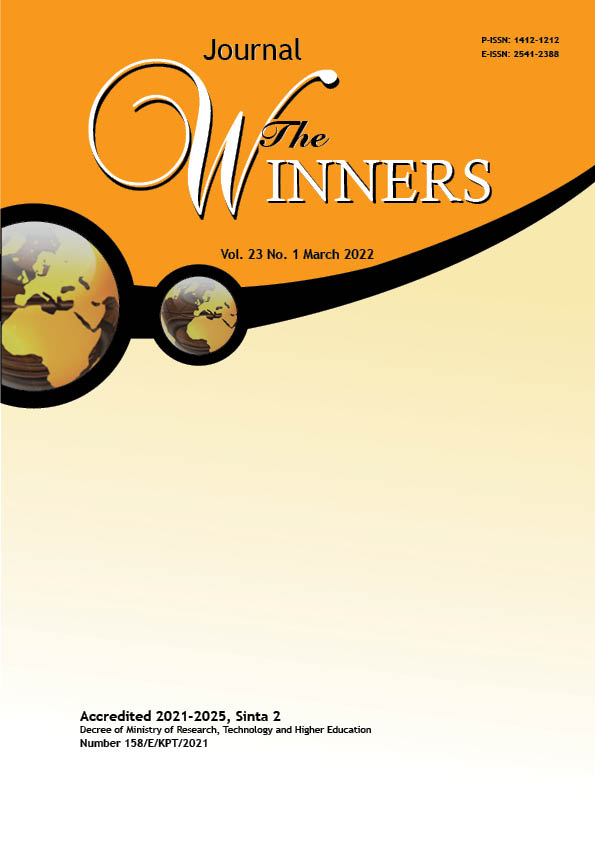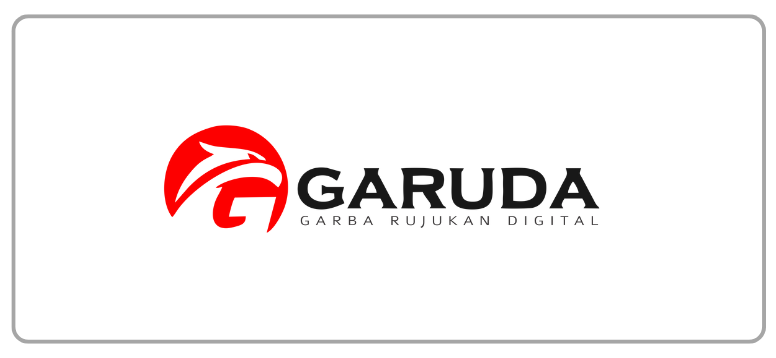How Financial Ratios and Firm Size Affect Profitability: Evidence from Food and Beverages Industry in Indonesia
DOI:
https://doi.org/10.21512/tw.v23i1.7099Keywords:
financial ratios, firm size, industry profitabilityAbstract
The research was conducted to determine the influence of financial ratios and firm size on the profitability of the company in the food and beverages industry in Indonesia, both partially and simultaneously and to determine which factor has the most significant influence on profitability, from 2014 to 2019. The researcher selected six independent variables to be evaluated using descriptive statistical analysis, classical assumption evaluation, multiple regression analysis, and hypotheses testing with the Microsoft Excel 2016 and EViews 10 as statistical tools. The sampling method and panel data were used to collect the data. There were 72 observation data collected from the Indonesia stock exchange as well as the company's official webpage from 11 food and beverage companies. The financial ratios chosen for the research were working capital to total asset ratio, current ratio, debt to equity ratio, total asset turnover, inventory turnover, and firm size. On the other hand, return on assets was being used as the dependent variable. The research results indicate that, simultaneously, 51,35% influences the profitability of the company. Total asset turnover, inventory turnover, and firm size insignificantly influence the performance of the company, and the debt to equity ratio is the factor with the most significant influence.
References
Ali, S. A. (2019). Determinants of profitability in the manufacturing firm: The case of natural mineral water producing companies. [Master Thesis, Addis Ababa University].
Andy & Johan, S. (2019). Analisis faktor-faktor yang mempengaruhi nilai perusahaan di sektor properti dan real estate terdaftar di Bursa Efek Indonesia pada tahun 2014-2018. Journal Manajemen Bisnis dan Kewirausahaan, 4(6), 264-269. http://dx.doi.org/10.24912/jmbk.v4i6.9791
Cakranegara, P. (2020). Valuasi aset tak berwujud perusahaan start up teknologi dengan menggunakan metode Navaro Lopez untuk penawaran saham perdana. Prosiding Working Papers Series in Management, 12(2), 27-35. https://doi.org/10.25170/wpm.v12i2.27-35
Creswell, J. W. (2017). Research Design: Qualitative, Quantitative, and Mixed Methods Approaches. Sage Publications.
Dang, C., Li, Z., & Yang, C. (2018). Measuring firm size in empirical corporate finance. Journal Banking anf Finance, 86(C), 159-176. https://doi.org/10.1016/j.jbankfin.2017.09.006
Dewi, T. F. (2017). Pengaruh current ratio, working capital to total asset, debt to total asset, return on asset dan total asset turnover terhadap perubahan laba pada perusahaan dagang sektor retail yang terdaftar di Bursa Efek Indonesia. 1-12.
Dhantine, J. & Donaldson, J. (2015). Intermediate Financial Theory. Oxford: Elsevier Inc.
Farooq, U. (2019). Impact of inventory turnover on the profitability of non-financial sector firms in Pakistan. Journal of Finance and Accounting Research, 1(1), 34-51. https://doi.org/10.32350/JFAR.0101.03
Ghozali, I. (2016). Aplikasi Analisis Multivariate dengan Program SPSS. Semarang: Penerbit Diponegoro.
Gibson, D. N. (2011). Financial Statement Analysis. Canada: South-Western, Cengage Learning.
Hasanah, A. & Enggariyanto, D. (2018). Analisis faktor-faktor yang mempengaruhi return on assets pada perusahaan manufaktur yang terdaftar di Bursa Efek Indonesia. Journal of Applied Managerial Accounting, 2(1), 15-25. https://doi.org/10.30871/jama.v2i1.658
Irman, M., Purwati, A., & Juliyanti. (2020). Analysis on the influence of current ratio, debt to equity ratio and total asset turnover toward return on assets on the otomotive and component company that has been registered in Indonesia Stock Exchange within 2011-2017. International Journal of Economics Development Research, 1(1), 36-44. https://doi.org/10.37385/ijedr.v1i1.26
Niresh, J. A. & Velnampy, T. (2014). Firm size and profitability: A study of listed manufacturing firms in Sri Lanka. International Journal of Business and Management, 9(4), 57-64. https://doi.org/10.5539/ijbm.v9n4p57
Ohlson, J. A. (1980). Financial ratios and the probabilistic prediction of bankruptcy. Journal of Accounting Research, 109-131.
Purba, M. I., Sitorus, A. S., Rinanda, A., Malau, I., & Danantho, Q. (2020). Pengaruh working capital to total asset (WCTA), current ratio (CR), dan debt to equity ratio (DER) terhadap profitabilitas pada perusahaan manufaktur sektor aneka industri terdaftar di Bursa Efek Indonesia periode 2014-2017. Universitas Dharmawangsa, 14(3), 404-418.
Purwanto & Bina, C. R. (2016). Analysis of financial ratio on predicting earning growth in selected mining companies. Universal Journal of Industrial and Business Management, 4(3), 81-87. https://doi.org/10.13189/ujibm.2016.040301
Rohmah, I. (2018). Pengaruh Current Ratio (CR), Debt to Equity Ratio (DER), Total Asset Turnover (TATO) dan Net profit Margin (NPM) Terhadap Return on Assets (ROA) pada Perusahaan Food and Beverage yang Terdaftar di Bursa Efek Indonesia (BEI) Tahu 2013-2016. Kudus: Fakultas Ekonomi dan Bisnis, Universitas Muria Kudus.
Rusydiana, A. S. & Nugroho, T. (2017). Measuring efficiency of life insurance institution in Indonesia: Data envelopment analysis approach. Global Review of Islamic Economics and Business, 5(1), 12-24. http://dx.doi.org/10.14421/grieb.2017.051-02
Sanjaya, R. & Henviani. (2020). Factors that infuence on the price to book value of the company in Indonesia Stock Exchange. Riset: Jurnal Aplikasi Ekonomi Akuntansi dan Bisnis, 2(2), 361-372. https://doi.org/10.35212/riset.v2i2.58
Shah, M. & Khan, F. (2018). Profitability and working capital management Nexus: Evidence from food & personal care products sector firms. Journal of Business and Tourism, 55-67.
Tracy, A. (2012). Ratio Analysis Fundamentals: How 17 Financial Ratios Can Allow You to Analyse Any Business on the Planet (1st Ed.). CreateSpace Independent Publishing Platform.
Wang, N., Wang, L., Zhang, L., & Yu, Y. (2020). Tax shelters, reputational costs and CEO turnover: Evidence from tax-violating enterprises in China. Emerging Markets Finance and Trade, 57, 1986-2005. https://doi.org/10.1080/1540496X.2020.1768070
Downloads
Published
How to Cite
Issue
Section
License
Copyright (c) 2022 Purwanto Purwanto, Chesa Ivania Larasati

This work is licensed under a Creative Commons Attribution-ShareAlike 4.0 International License.
Authors who publish with this journal agree to the following terms:
a. Authors retain copyright and grant the journal right of first publication with the work simultaneously licensed under a Creative Commons Attribution License - Share Alike that allows others to share the work with an acknowledgment of the work's authorship and initial publication in this journal.
b. Authors are able to enter into separate, additional contractual arrangements for the non-exclusive distribution of the journal's published version of the work (e.g., post it to an institutional repository or publish it in a book), with an acknowledgment of its initial publication in this journal.
c. Authors are permitted and encouraged to post their work online (e.g., in institutional repositories or on their website) prior to and during the submission process, as it can lead to productive exchanges, as well as earlier and greater citation of published work.
USER RIGHTS
All articles published Open Access will be immediately and permanently free for everyone to read and download. We are continuously working with our author communities to select the best choice of license options, currently being defined for this journal as follows: Creative Commons Attribution-Share Alike (CC BY-SA)

















